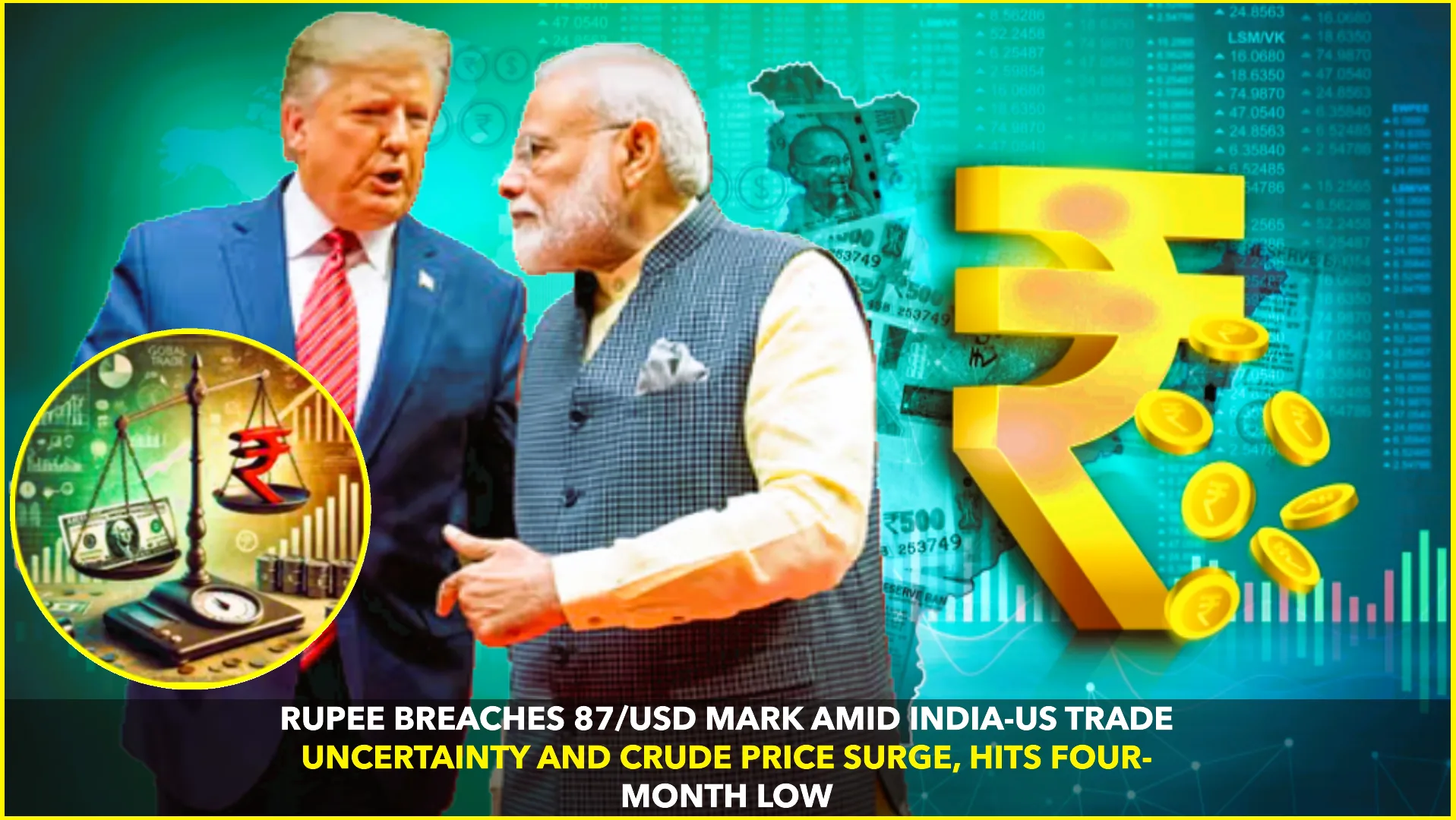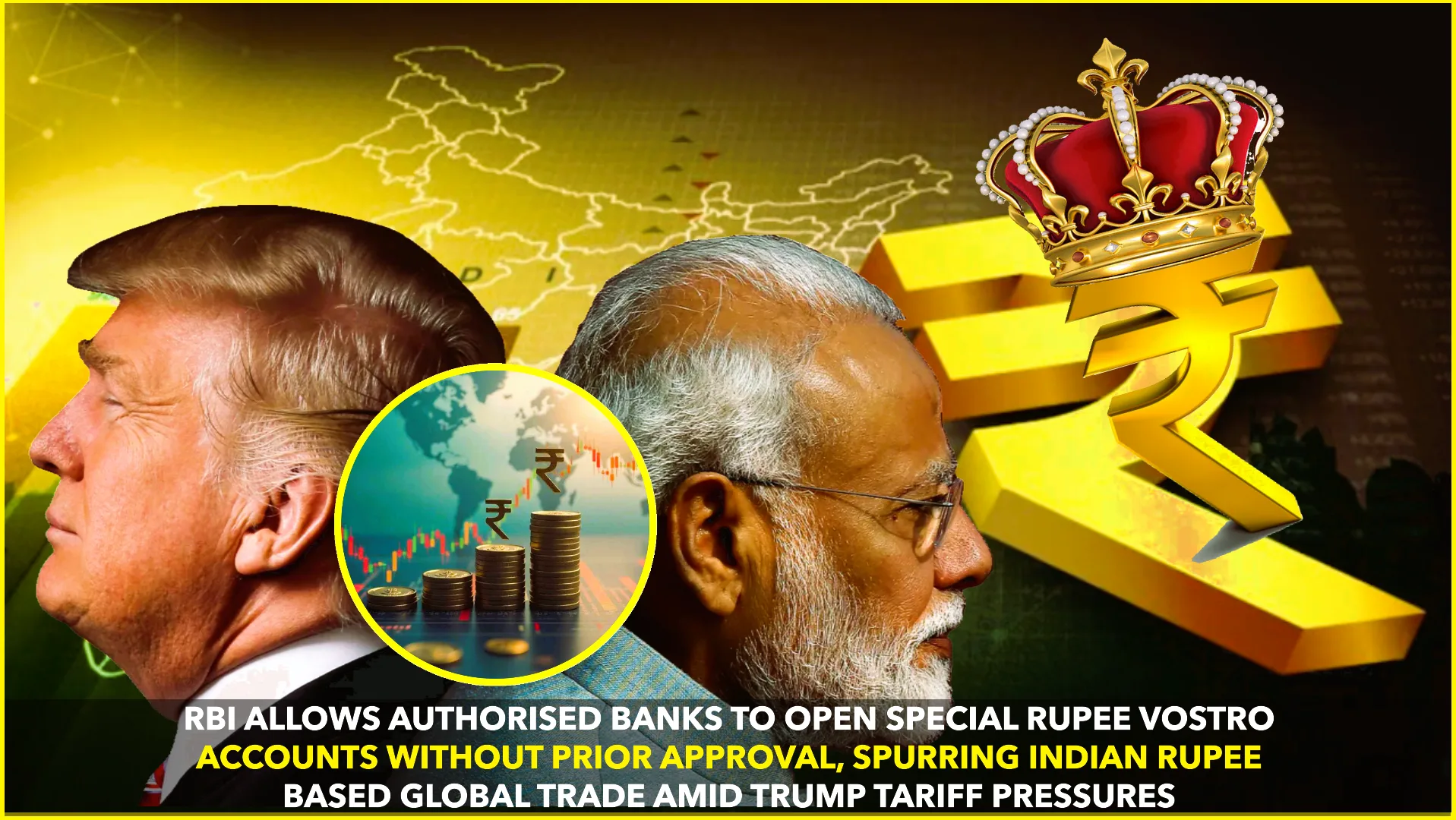The Indian rupee fell sharply below the psychological 87 mark against the US dollar on Wednesday, reaching its lowest level in over four months, amid growing concerns over the delayed India-US trade deal, a spike in global crude oil prices, and sustained foreign fund outflows.
The domestic currency depreciated to 87.03/USD during intraday trading, marking its weakest performance since March 2025. The pressure came largely from external macroeconomic forces and domestic uncertainties that are weighing heavily on investor sentiment.
Trade Deal Delay Sparks Uncertainty
One of the main triggers behind the rupee’s slide is the growing uncertainty around the long-anticipated India-US trade deal. Initially expected to be finalized by the end of July, the delay has caused concern among investors. With just a day left before the August 1 deadline, there are no clear signs of a breakthrough.
The situation was further aggravated by recent political rhetoric from Washington, where some U.S. lawmakers suggested potential tariffs of 20-25% on select Indian exports. These protectionist signals have led to apprehensions about a possible trade rift, which could significantly impact India’s export earnings and overall foreign exchange inflows.
Crude Oil Prices Add to Import Pressure
Adding to the rupee’s woes, global crude oil prices have seen a sharp uptick in recent weeks. Brent crude futures are currently hovering around $89 per barrel, their highest in over three months. As India imports nearly 85% of its oil needs, rising crude prices widen the country’s trade deficit and increase the demand for dollars to fund imports.
According to analysts at ICICI Securities, “Rising crude oil prices exert pressure on India’s current account, increasing demand for the US dollar. The rupee is vulnerable whenever oil spikes coincide with external headwinds.”
Month-End Dollar Demand and Outflows
The end-of-month demand for dollars by importers, coupled with persistent outflows of foreign funds from the Indian equity market, has added further downward pressure on the currency. Foreign portfolio investors (FPIs) have pulled out nearly ₹7,200 crore from Indian equities in the past three weeks, driven by global risk aversion and better yields in US assets.
Meanwhile, the US dollar has strengthened globally, supported by robust US economic data and a hawkish stance by the Federal Reserve, making emerging market currencies like the rupee more vulnerable.
RBI’s Limited Intervention
While the Reserve Bank of India (RBI) has occasionally intervened in the forex market to stabilize the rupee, analysts believe the central bank may allow a gradual depreciation to maintain export competitiveness, as long as it does not result in excessive volatility.
“RBI seems comfortable with a controlled depreciation of the rupee, especially given the external pressures. However, if it crosses critical resistance levels too fast, we may see aggressive intervention,” said Madhavi Arora, Lead Economist at Emkay Global.
Outlook
Experts warn that unless there is clarity on the India-US trade agreement and a moderation in oil prices, the rupee may remain under pressure in the near term. A breach of 87.25/USD could open further downside toward the 88 mark, say forex strategists.
Sources:
- Reuters: https://www.reuters.com
- Business Standard: https://www.business-standard.com
- Livemint: https://www.livemint.com
- RBI Data and ICICI Securities Reports










